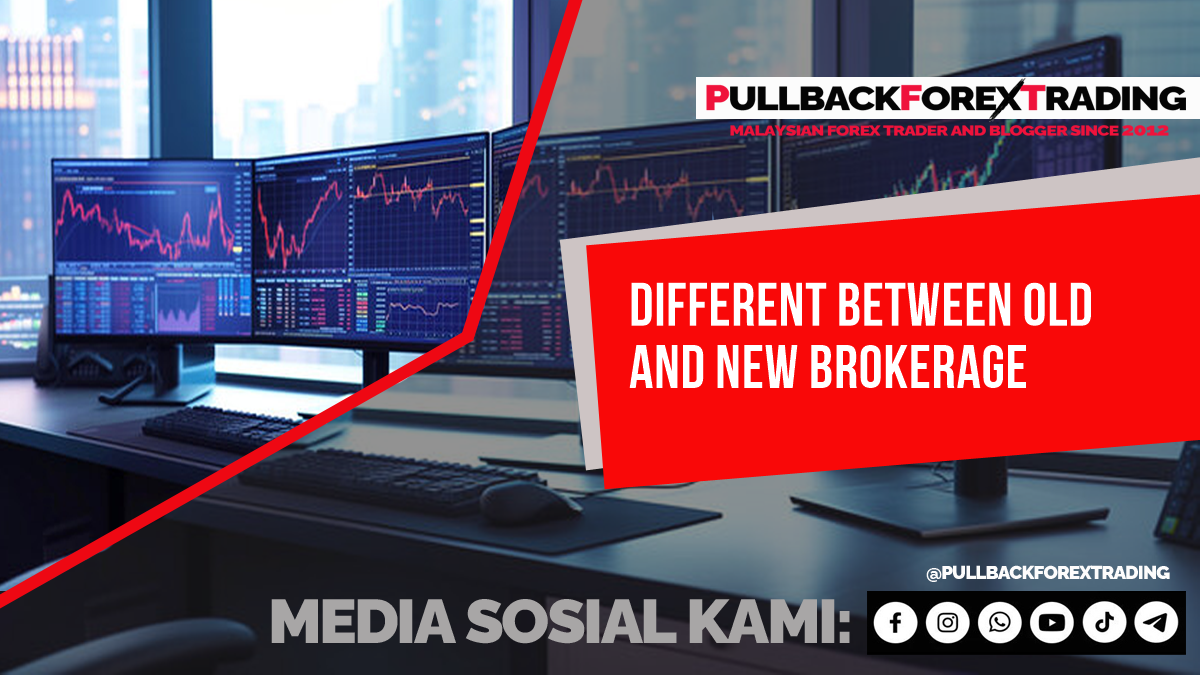
How Today’s Brokerages Revolutionize Trading Compared to the Older Brokerage Models
The world of financial trading has undergone a remarkable transformation in recent decades, thanks to advancements in technology and increased competition. Brokerages that once catered to a select group of wealthy investors now offer their services to anyone with an internet connection. Here’s a detailed comparison between today’s brokerages for retail traders and the older brokerage models, highlighting how the industry has evolved.
Dapatkan update lebih cepat dan pantas melalui telegram kami.
Accessibility: Trading for All
In the past, brokerage services were primarily accessible to the wealthy or institutional investors. High fees and account minimums meant that retail traders were often excluded. Transactions required phone calls or in-person visits to a broker’s office, making the process cumbersome and slow.
Modern brokerages, on the other hand, have democratized trading. Online platforms allow anyone to open an account, often with no minimum deposit requirements. The rise of mobile apps means trades can be executed from anywhere, making financial markets accessible to millions of new participants globally.
TAWARAN MENARIK DARI PENAJA – KLIK SINI –
Fees and Commissions: From High Costs to Free Trading
Older brokerage models charged steep fees for their services. Commissions were calculated as a flat fee or a percentage of the trade value, often eating into profits. Additional charges for account maintenance, statements, and advice further increased the cost of trading.
Today’s brokerages have disrupted this model. Commission-free trading is now a standard offering from many platforms, especially for stocks and ETFs. Forex and CFD brokers primarily earn through spreads, making costs more predictable for traders. Automation and competition have driven costs down significantly, benefiting retail investors.
Technology and Trading Platforms: The Game Changer
In the past, trading relied on manual processes and basic technology. Research tools and real-time data were often expensive or unavailable, leaving traders with limited insights.
Today’s brokerages leverage cutting-edge technology to provide traders with advanced platforms. Features like real-time data, charting tools, AI-driven analytics, and algorithmic trading are now standard. Many platforms also offer mobile-friendly interfaces, ensuring traders can monitor and execute trades on the go. Social trading platforms even allow users to copy the strategies of experienced traders, further leveling the playing field.
Market Access and Product Offerings: A World of Possibilities
Older brokerages offered limited access to financial markets, often focusing on local stocks, bonds, and a small selection of international assets.
Modern brokerages provide a wealth of options. Traders can now access global markets, including Forex, cryptocurrencies, commodities, and more. The introduction of fractional shares allows small investors to buy portions of expensive stocks like Tesla or Amazon, further expanding opportunities. Additionally, products like ETFs, options, and CFDs give retail traders diverse ways to invest and hedge.
Regulation and Transparency: Building Trust
In the older brokerage era, there was limited transparency in pricing and execution. Regulations were inconsistent across regions, leaving some traders vulnerable to exploitation.
Today’s brokerages operate in a highly regulated environment, offering better investor protections. Transparent pricing models and detailed disclosures are the norm. Many platforms also provide features like negative balance protection, ensuring retail traders don’t lose more than their initial investment.
Support and Education: Empowering Traders
Older brokerages relied heavily on human brokers for advice, but this often came with conflicts of interest, as brokers prioritized commissions over clients’ needs. Educational resources were scarce, leaving many traders in the dark.
Modern brokerages prioritize education and support. They offer free webinars, tutorials, and demo accounts to help new traders learn the ropes. Online communities and social trading platforms foster collaborative learning. Additionally, 24/7 customer support ensures that traders can get help whenever needed.
Speed of Execution: From Delays to Instant Trades
Manual order processing in the past led to significant delays, especially for larger trades. Slippage was a common issue due to inefficiencies in execution.
Today’s brokerages use electronic trading systems that ensure near-instant execution. Slippage is minimal, and traders can use advanced tools like guaranteed stop-loss orders to manage risk more effectively.
Cost of Entry: From Exclusivity to Inclusivity
High entry barriers characterized older brokerages. Large initial investments were required, making trading an exclusive activity for the wealthy.
Modern brokerages have eliminated these barriers. Low or no minimum deposits are common, and fractional investments make it possible to start trading with minimal capital. This inclusivity has brought millions of new participants into the market, further fueling its growth.
Conclusion
The evolution of brokerages has transformed financial markets, making them more accessible, affordable, and transparent. Older brokerage models, while reliable for their time, were exclusive and expensive, limiting opportunities for retail traders. Today’s brokerages, driven by technology and a focus on democratizing finance, have opened the doors to a new generation of traders.
Whether you’re a seasoned investor or a newcomer, the modern brokerage landscape offers unparalleled tools and opportunities to succeed in trading. As technology continues to evolve, we can expect even more innovative features to empower retail traders in the years to come.
ADMIN
20/11/24


